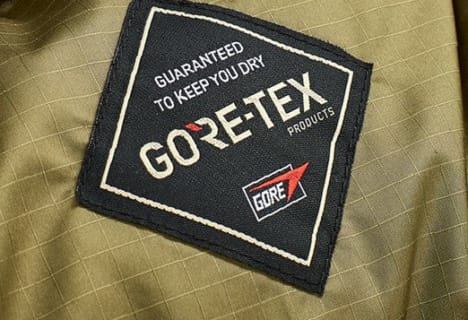4 Minute Read
It can seem like there are an endless amount of standards and regulations in place when it comes to PPE clothing, equipment and safety requirements. Whilst they are designed to ensure the safety of your team, it can be a little confusing to understand the ins and outs of all of them, so we’ll be walking you through EN ISO 20471 and all you need to know to stay compliant.
In environments where visibility is crucial for safety, high-visibility clothing (HVC) plays a critical role in reducing the risk of accidents. EN ISO 20471 is the international standard that defines the requirements for HVC, ensuring that it provides the necessary level of visibility and protection for your workers in hazardous environments.
What is EN ISO 20471?
The International Organisation for Standardisation is an independent, non-governmental, international organisation that brings experts together to agree on standards and best practices for a variety of sectors and industries, one such standard is EN ISO 20471 (formerly known as EN 471), which is an international standard that details the requirements for HVC to enhance the visibility of workers in different hazardous situations. HVC is categorised into 3 classes, each of them corresponding to a specific level of protection:

Key Requirements of EN ISO 20471
EN ISO 20471 mandates a combination of fluorescent and retroreflective materials to provide optimal visibility. The standard specifies the minimum area of fluorescent material required on different parts of the garment, as well as the intensity of retro-reflectivity required to ensure visibility under varying lighting conditions. Each class requires a different amount of fluorescent and retroreflective material, as detailed in the table below.
| X (See Label) | Fluorescent (m²) | Retroreflective (m²) |
|---|---|---|
| Class 1 | ≥0.14 | ≥0.10 |
| Class 2 | ≥0.50 | ≥0.13 |
| Class 3 | ≥0.80 | ≥0.20 |
To ensure visibility from all angles, garments must have retroreflective materials on multiple areas across the garments, including the torso, arms, and legs.
EN ISO 20471 also outlines requirements for the colour of HVC, with 3 colours being approved; fluorescent yellow; orange; and red. In addition to the surface area of each material, there are also requirements for the performance of the garment. Things such as tensile strength, thermal resistance, and dimensional stability are covered within the standard. These requirements ensure that all HVC is suitable for their needed environments where risks are present.
Logos and branded materials are also covered with ISO 20471, and states that areas of retroreflective material covered by branding or logos will be excluded from the overall amount of retroreflective material. Care should be taken to ensure that branding does not interfere with or otherwise hamper the reflectiveness of the HVC, as this can increase risks within the workplace.
Additionally, the standard outlines requirements for stitching, seam strength, and overall garment construction to ensure durability and resistance to wear and tear. It also addresses specific features like cuffs, pockets, and fasteners to ensure proper fit and functionality.
EN ISO 20471 vs EN471
In 2013, the standard EN471 was replaced by EN ISO 20471. Several improvements were made to the standard, such as a stronger distinction between the different types of risk situations, which HVC wearers can then apply to their own situations, to better determine the level of protection required. As well as the above, there are other notable improvements to the standard, such as:
- Expanded Class 3 Requirements: The standard introduces stricter requirements for Class 3 HVC, including higher retro-reflectivity levels and improved colour combinations for enhanced visibility.
- Updated Testing Methods: The standard specifies fabrics are tested for colour fastness both when new and after at least 5 washes.
- Scope of Requirements: The strict requirements for fluorescent and reflective materials, such as colour fastness, reflection, luminance, and tear resistance, now also apply to the contrast material.
- Icons: The icons used for standardisation have been modified to increase clarity.
Maintaining Compliance with EN ISO 20471
You must ensure that your employees wear HVC that complies with EN ISO 204701, particularly in hazardous environments where visibility is critical. This involves:
- Selecting Appropriate HVC: Choosing HVC based on the specific class requirements appropriate for the hazards of the work environment.
- Providing Access to HVC: Ensuring that employees have access to the necessary HVC in their needed size and fit.
- Managing HVC Inventory: Implementing a system for maintaining a sufficient inventory to replace HVC that is worn or damaged and no longer meets ISO 20471 requirements.
- Training and Awareness: Ensuring employees receive regular training on the proper use of HVC, including care instructions, the appropriate HVC for the environment, and procedures for identifying and reporting damaged garments.
- Regular Inspections: Conducting regular inspections of HVC to ensure it remains in good condition and meets the EN ISO 20471 requirements.
Compliant Garments With DCC
At Direct Corporate Clothing, we have a range of high-visibility garments to meet your needs, including garments that meet the strict requirements of EN ISO 20471. Alongside HVC, as a trusted PPE supplier, we can also protect your team in other ways, such as safety footwear, eye protection, head protection, hearing protection, and much more.
Get in touch with our team today to discover our full range of top-to-toe protection.






